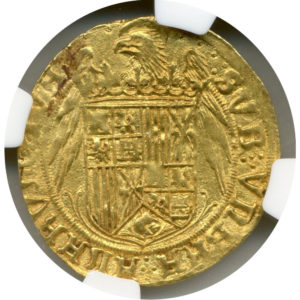1794 50c Flowing Hair Silver Half Dollar Overton-101A NGC VF25.
While any first year of issue has its own irresistible mystique and numismatic magnetism, the 1794 half dollar stands apart as the first year of what was arguably the country’s most important silver denomination. It was also important in its role as part of the official inauguration of Robert Scot’s two-year Flowing Hair type, as well as a highly visible “coming out” for the Mint’s implementation of required coinage under The Mint Act of 1792. The Continental Congress was watching, as were all of those who lobbied for private coiners and many other interested observers throughout the world.
Moreover, 1794 was the Mint’s first experience striking large denomination silver coinage for mass circulation. Understandably, the Mint opted to make the 1794 dollar a showpiece of the new country’s currency. Silver deposits were sufficient for the effort, but the fledgling Mint’s equipment was simply not up to the task. Just over 2,000 1794 silver dollars were struck, but more than 10% of those were unacceptable, leaving a net mintage of 1,748 pieces. Such a small mintage was hardly enough to handle the demands of commerce.
The silver dollar was too big for the screw press to do its best work. By the time the Mint authorities settled on “Plan B” (striking half dollars in lieu of facing more waste and delays trying to produce silver dollars), the end of 1794 was quickly approaching. The half dollar assumed monumental importance for the Mint and commerce.
Rising to the task, the Mint moved ahead with speed, although it continued to struggle with several production limitations. The half dollar diameter was more suitable for the coin press, but the Flowing Hair design remained a challenge to strike. And, the Mint’s lack of experience in annealing and hardening the dies took a toll. The first pair of half dollar working dies produced hardly any coins at all before the obverse failed. A new master die was employed, and it was not until early in 1795 any reasonable production success was accomplished for 1794-dated half dollars.
The first half dollars struck did not deliver until December 1, 1794 when 5,300 pieces were received — a documented record that dispels any thought that the 1794 half dollars were delivered at the same time as the first 1794 silver dollars.
A second delivery of an estimated 18,164 pieces followed on February 4, 1795. These coins were probably all 1794-dated half dollars, accounting for the balance of the 1794 mintage that is generally accepted today. From that mintage, about 800 examples survive in all grades and varieties combined. The states were starved for circulating coinage, and the much-needed half dollars were quickly absorbed into the economy. Later in 1795, an additional mintage of nearly 300,000 half dollars was struck. All of those coins were dated 1795.
Six obverse dies and seven reverse dies were utilized for 11 documented 1794 die combinations. A single edge die was employed. Die breakage consumed six of the 13 dies almost immediately. As a result, 10 of the 11 1794 die pairs rank R.5 or higher in rarity. By far, the O-101 (Tompkins-7) die pair (High R.3) supplies the lion’s share of 1794 half dollars, as well as the only Mint State examples certified.














